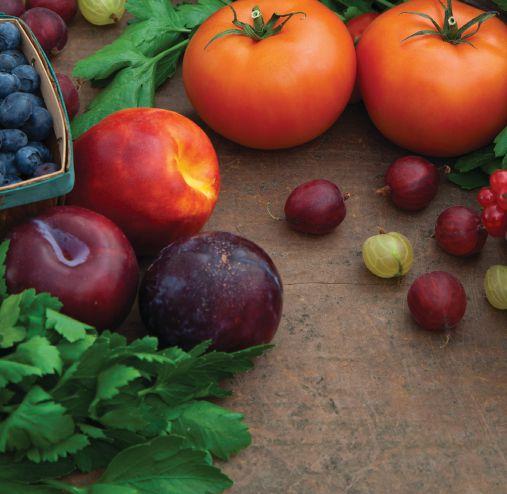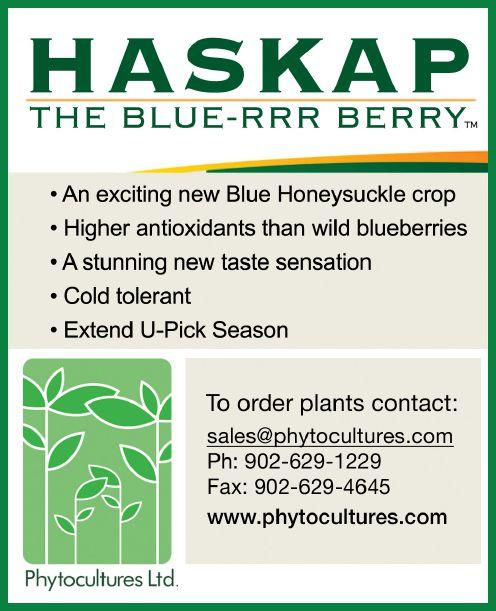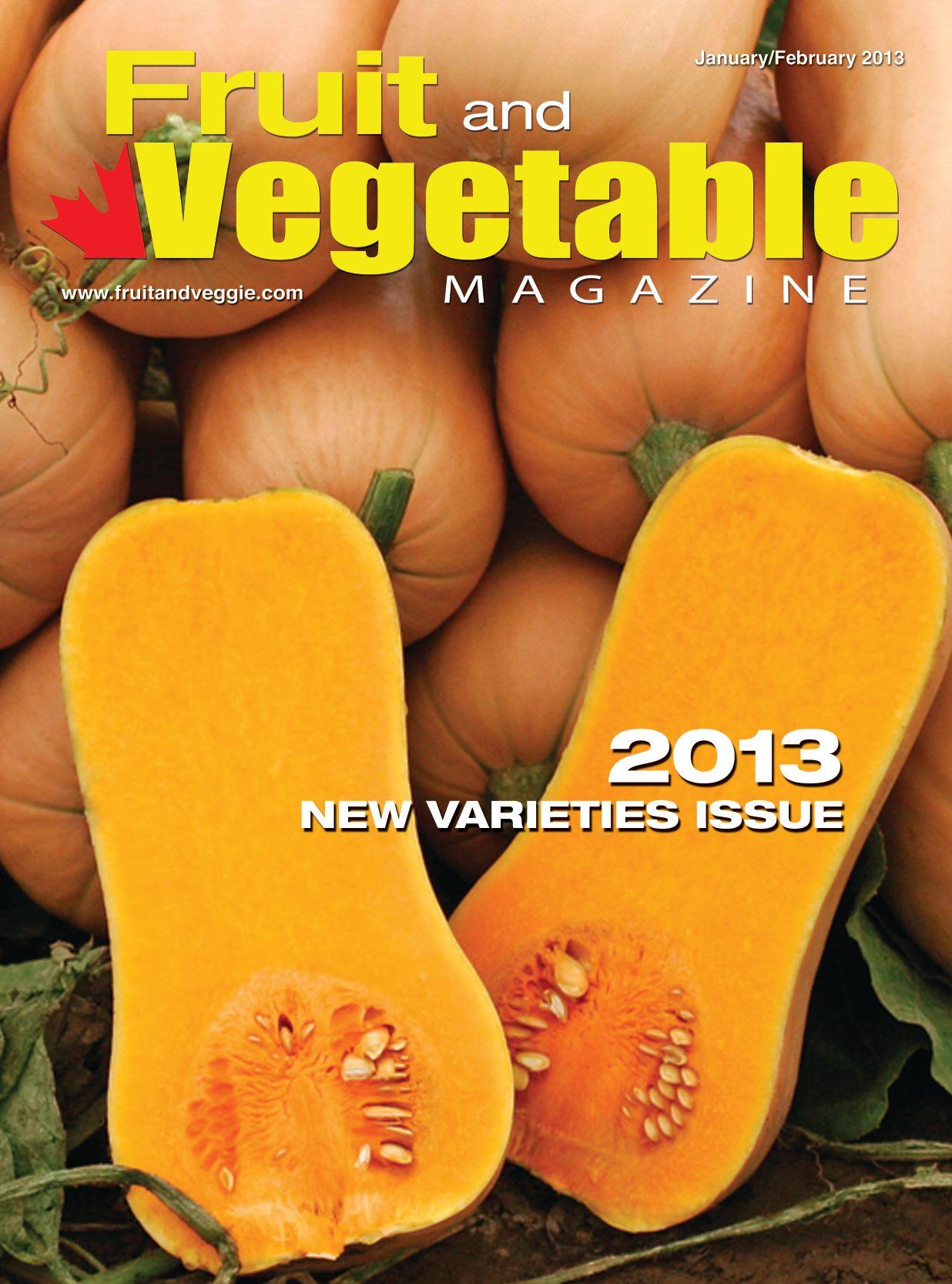
ato Primo Red Tom ays to Approx. 65 da xtra maturity, e ooth, large, sm globe very firm

Karisma Approx. 80 days to rity, large, mooth dark o red skin.



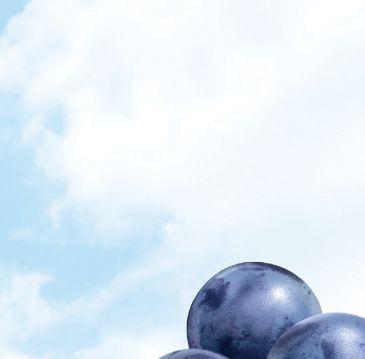


ato Primo Red Tom ays to Approx. 65 da xtra maturity, e ooth, large, sm globe very firm

Karisma Approx. 80 days to rity, large, mooth dark o red skin.





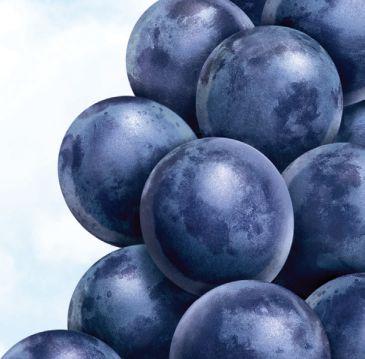
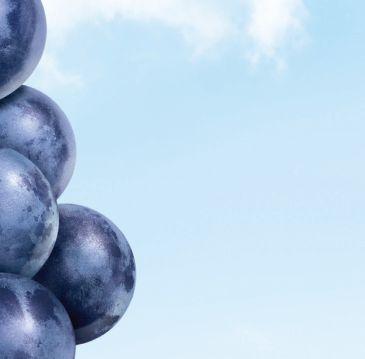
PureSpray™ GREEN Spray Oil 13E. Protection at its purest –CAS# 8042-47-5

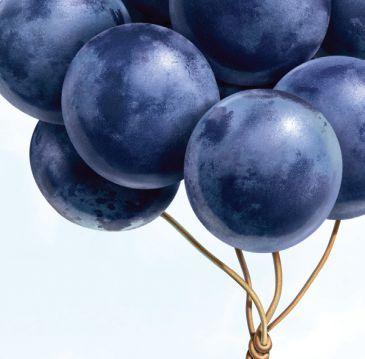
Introducing PureSpray GREEN Spray Oil 13E, from the largest producer of white oils. It’s proof that not all spray oils are created equal. It is an innovative isoparaf n oil that offers the highest purity levels on the market with CAS# 8042-47-5. This means it’s formulated with 99.9% pure isoparaf n base oils and is guaranteed to be free of aromatics, which harm the food chain. And since it’s suitable for organic production, both organic and traditional growers can bene t from its many strengths.
PureSpray GREEN Spray Oil 13E effectively protects your high value grape crop by quickly controlling pests and disease, and providing extended protection within your IPM program. All without any



resistance, phytotoxicity or burning issues, when used as directed. So use it early to avoid the need for traditional toxic chemicals later.

As many pesticides are being delisted, your choices are limited and becoming more so every day. So when you have a choice to make, be sure to choose the purest – PureSpray GREEN Spray Oil 13E.





It’s an effective choice with unlimited possibilities. For more product information visit www.purespraygreen.com/grapes.




It’s an effective choice with unlimited possibilities. For more








Here’s the latest buzz: Get the same active ingredients at a fair price.
MANA Canada offers four insecticides to protect your fruits and vegetables and maximize your production. With MANA Canada, you receive fair pricing and still achieve the results you expect. MANA Canada insecticides, herbicides and fungicides are available from leading retailers. Support choice and fair pricing – ask for your MANA Canada product by name.
January/February 2013 Volume 69, No. 1
Editor Margaret Land mland@annexweb.com
519-429-5190 • 888-599-2228 ext. 269
Advertising Manager
Sharon Kauk skauk@annexweb.com
519-429-5189 • 888-599-2228 ext. 242
Sales Assistant
Mary Burnie mburnie@annexweb.com
519-429-5175 • 888-599-2228 ext. 234
Media Designer
Emily Sun
Group Publisher
Diane Kleer dkleer@annexweb.com
President Mike Fredericks mfredericks@annexweb.com
PUBLICATION MAIL AGREEMENT #40065710 RETURN UNDELIVERABLE CANADIAN ADDRESSES TO CIRCULATION DEPT.,
P.O. BOX 530, SIMCOE, ON N3Y 4N5
e-mail: subscribe@fruitandveggie.com
Fruit & Vegetable Magazine is published six times a year (January/February, March, April, May, October, November/ December) by Annex Publishing & Printing Inc.,
P.O. Box 530, 105 Donly Dr. S., Simcoe, ON N3Y 4N5
Printed in Canada ISSN 1488-7959
Circulation
e-mail: subscribe@fruitandveggie.com
Tel: 1-866-790-6070 ext. 202 Fax: 1-877-624-1940
Mail: P.O. Box 530, Simcoe, ON N3Y 4N5
Subscription Rates
Canada – 1 Year $ 21.00 (includes GST – #867172652RT0001) $22.60 (includes QST/HST)
U.S.A. – 1 Year $35.00 US
Foreign – 1 Year $ 55.00 US
Occasionally, Fruit & Vegetable Magazine will mail information on behalf of industry-related groups whose products and services we believe may be of interest to you. If you prefer not to receive this information, please contact our circulation department in any of the four ways listed above.
No part of the editorial content of this publication may be reprinted without the publisher’s written permission. ©2013 Annex Publishing and Printing Inc. All rights reserved. Opinions expressed in this magazine are not necessarily those of the editor or the publisher. No liability is assumed for errors or omissions. All advertising is subject to the publisher’s approval. Such approval does not imply any endorsement of the products or services advertised. Publisher reserves the right to refuse advertising that does not meet the standards of the publication.
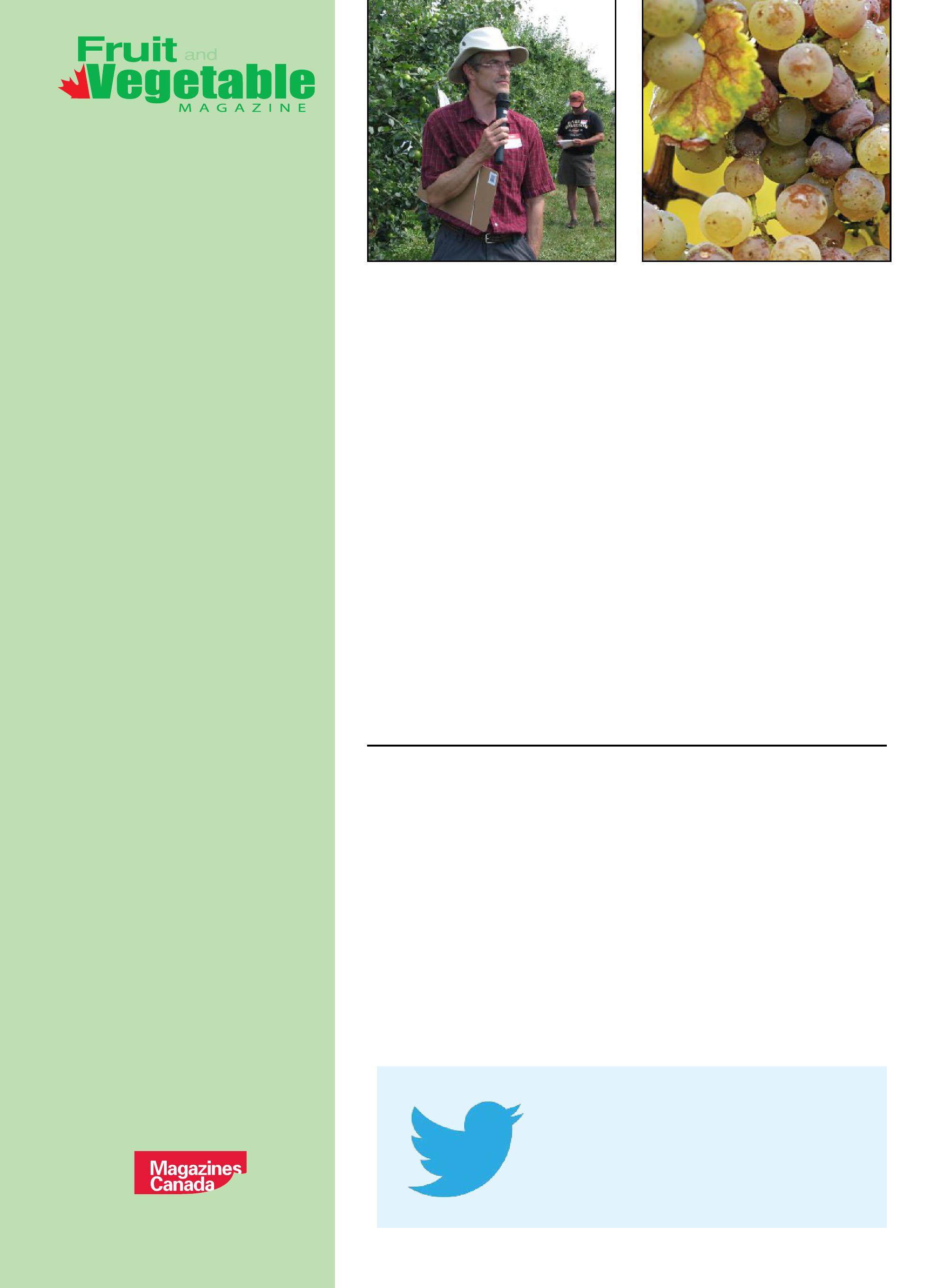
with the latest news from Canada’s fruit and vegetable industry between issues of Fruit and Vegetable Magazine. Visit www.fruitandveggie.com and sign up for our twice-monthly e-newsletter or follow us on Twitter @FruitVeggieMag
I’m guilty. I admit it.
My household is one of many the Institution of Mechanical Engineers discusses in its latest research report –Global Food: Waste Not, Want Not.
According to the 31-page report, the world produces about four billion metric tons of food each year.
“Yet, due to poor practices in harvesting, storage and transportation as well as market and consumer wastage, it’s estimated that 30 to 50 per cent (1.2 to 2 billion tons) of all food produced never reaches a human stomach,” the report summarizes.
I can attest to that. In my household, good intentions combined with an overly optimistic idea of how my children feel about vegetables has led to the demise of many a carrot and cucumber. The weekly refrigerator purge of almost sentient broccoli and limp zucchini is discouraging in its relation to my children’s anti-veggie stance and my family’s finances.
It would appear I’m not alone. According to the report, in developed countries, more efficient farming practices, and better transportation, storage and processing facilities have resulted in a larger volume of the harvest making it to the store. But once the food reaches the supermarket, the wastage begins either when the produce is rejected or after it’s purchased and enters consumers’ homes.
“Overall, between 30 and 50 per cent of what has been bought in developed countries is thrown away by the purchaser,” the report states.
Oops!
But surprisingly, developed countries aren’t the biggest wasters of food.
“In less-developed countries, such as those of sub-Saharan Africa and Southeast Asia, wastage tends to occur primarily at the farmer-producer end of the supply chain,” the study reports. “Inefficient harvesting, inadequate local transportation and poor infrastructure mean that produce is frequently handled inappropriately and stored under unsuitable farm-site conditions.”
As a country becomes more developed, the area of concern for food loss usually moves further up the supply chain.

“In Southeast Asian countries, losses of rice can range from 37 to 80 per cent of total production, depending on development stage, which amounts to total wastage in the region of about 180 million metric tons annually,” the report states. “In China, a country experiencing rapid development, the rice loss figure is about 45 per cent, whereas in less-developed Vietnam, rice losses between the field and the table can amount to 80 per cent of production.”
So how can the world expect to feed about 9.5 billion people by 2075?
According to the Institution of Mechanical Engineers, the United Nations’ Food and Agriculture Organization (FAO) needs to work with the international engineering community to ensure governments from developed countries share their engineering knowledge, technology and design know-how with developing countries. The organization also believes that developing countries need to think seriously about minimizing waste when planning and developing future transportation and storage facilities. Furthermore, developed countries need to examine their policies to help change consumers’ expectations.
“These should discourage retailers from wasteful practices that lead to the rejection of food on the basis of cosmetic characteristics and losses in the home due to excessive purchasing by consumers,” the report states.
While I’m optimistic engineers and scientists can help curtail food wastage in the developing world through technological advancement, I’m less inclined to believe that consumer preferences in the developed world can be changed. People are attracted to shiny, clean, healthy-looking fruit and vegetables. Getting consumers to accept bruised apples with a slight case of scab or broccoli with a small patch of bug damage seems highly unlikely. It might be more advantageous to encourage less cosmetically appealing produce be routed to the processing sector, where faults can be
removed and food stored long term.
Now, if only Canada boasted a larger processing industry …
I also wanted to take some of this space to congratulate the Foreign Agricultural Resource Management Service, typically referred to as FARMS, for its recent recognition by the Ontario Fruit & Vegetable Growers’ Association. FARMS, which manages the Seasonal Agricultural Worker Program (SAWP), received the OFVGA’s Award of Merit in honour of its contribution to the Ontario horticulture sector.
“The service of FARMS to our industry is invaluable and the organization is a very deserving winner of this award,” said Art Smith, CEO of the OFVGA. “Our industry depends very strongly on the Seasonal Agricultural Worker Program as our core labour program. Without the work of FARMS, this program wouldn’t be in place and Ontarians would not be able to enjoy many of our great locally grown fruit and vegetable crops.”
FARMS was formed in 1987 to manage the administration of SAWP. This includes looking after transportation of workers to and from Canada, negotiating the terms and conditions of employment with both the Canadian and host governments, as well as other issues that could affect the continued success of the program. About 20,000 workers come to Canada each year through SAWP and many have been working on the same farms for 20 to 30 years.
“FARMS is a tireless advocate for labour issues in Ontario horticulture and both farmers and the many thousands of people who come here every year to work depend on their efforts to keep the program going,” said Smith. “If Canada had no workers under SAWP, more than half of the Canadian horticulture market would be lost to imports – and many popular but labour-intensive crops could no longer be grown here.”
Bravo, FARMS. Here’s to many more years of success. ❦

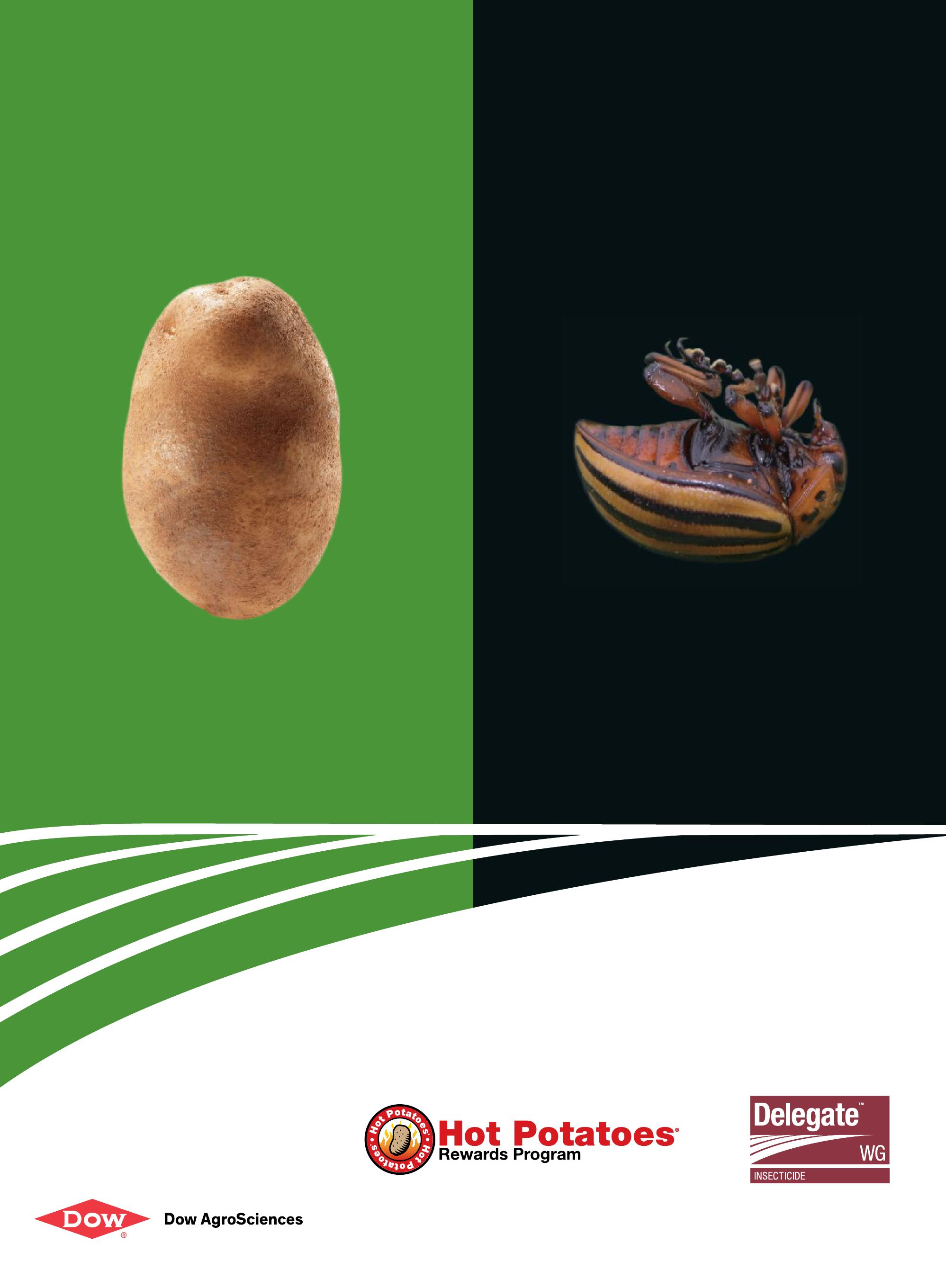
With the highest performance and lowest environmental impact, Delegate™ WG insecticide is the new standard for potatoes. It delivers superior, fast-acting control of Colorado potato beetle, European corn borer – and many other chewing pests. Call our Solutions Center at 1.800.667.3852 or visit dowagro.ca today.
By Dan Woolley
Canadian apple growers can anticipate future productivity gains from the Atlantic Food and Horticultural Research Centre’s test plots in Kentville, NS.
The test plot’s NC-140 International Apple Rootstock Trial, now in its third year, has such aheavy crop load it had to be thinned, Agriculture and Agri-Food Canada tree fruit researcher Charles Embree told visitors on the Nova Scotia Fruit Growers Association’s annual orchard tour.
The AFHRC test plots – as part of the NC-140 trial – has planted 31 different Honeycrisp rootstocks from New Your State, England, France, Germany and Russia.
There are also NC-140 test plots in British Columbia, 12 U.S. states and Mexico.
Dr. Gordon Braun, another AAFC tree fruit researcher, is overseeing an organic Honeycrip trial in a 10-row plot, planted with 10 trees in each row four years ago.
After encountering a problem with inhibited growth on the trials site, he placed three inches of composted hog manure on three rows, composting which greatly improved the growth and yield of those three rows, “producing superb apples last year,” said Braun.
Bill Craig, a tree fruit specialist with Perennia, the provincial consulting and extension agency, remarked, “It took a while to get the nitrogen level required in the plot.”
The AFHRC Cultivar Evaluation Trials encompasses 80 varieties of apple trees and apples from the trial’s 250 trees undergo consumer acceptance analysis in the labs of neighboring Acadia University in Wolfville, explained Marina Myra, NSFGA tree fruit researcher.
Dr. Suzanne Blatt, an AAFC entomologist, conducts research in the AFHRC entomology plot on insect occurrence in CET varieties the cultivars and rootstocks insects prefer.
Dr. Sean Myles, with the Dalhousie University agricultural faculty, has genetic diversity research underway in the AFHRC tree nursery. A large number of cultivars, 1,300 grafted onto
MAIN: Dr. Gordon Braun describes his organic Honeycrisp trial to NSFGA tour participants. INSET: Dr. Suzanne Blatt and Charles Embree, both AAFC orchard researchers, discuss their research projects during the NSFGA tour.
M9 rootstock, were introduced into the nursery in 2012. His research will look at breeding disease resistance into cultivars.
Dr. Myles said it is very time consuming and expensive to breed a new cultivar. So, tracing its DNA and establishing its genomics, can assist prediction of what a new cultivar could look like.
Genetic selection for future cultivars takes place in the nursery’s greenhouse, followed by screening at the seed stage, he said.
Because there is a bottleneck in the ability to measure cultivar traits, Dr. Myles plans to reduce the time and cost of collecting cultivar data.
At an orchard outside of Kentville, NSFGA research technician Doug Nichols is doing research trials with ABA (abscisic acid) and MaxCel on Honeycrisp, grafted to several different rootstocks, (11, 106, CG30 and M26) in a block planted in 2000. He is examining the interaction of Honeycrisp with various rootstocks as it affects fruit storage.
Nichols told NSFGA orchard tour par-
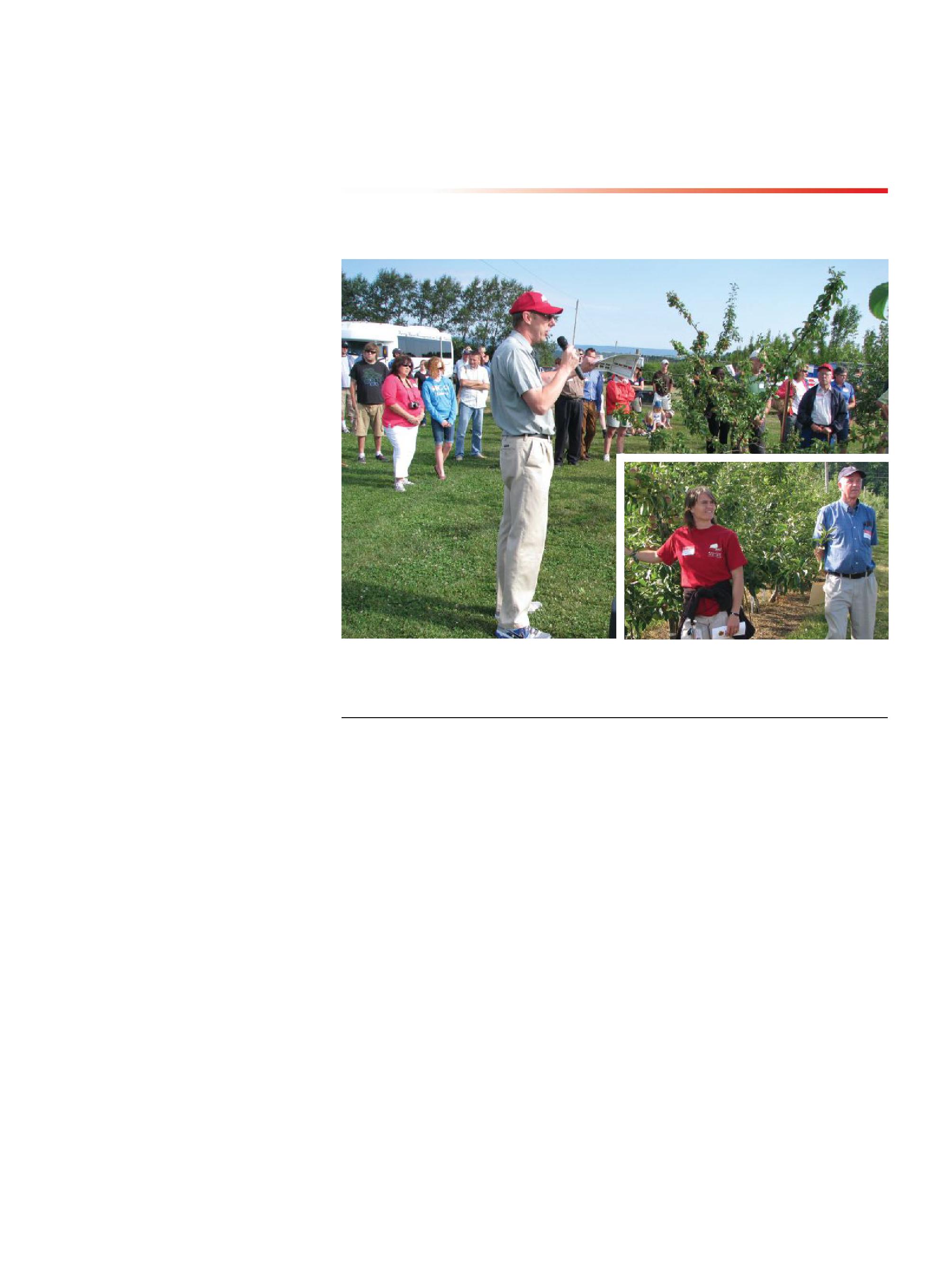
ticipants ABA is widely used in the U.S. to add colour to grapes. In 2011, he applied ABA to the trial block 30 days after full bloom and found it not only thinned the fruit on the trees, but it also caused their leaves to yellow and drop.
To reverse that effect, he added MaxCel at 300 ppm to see if it would thin with leaf drop. In 2012, however, he found smaller apples in the ABA-thinned blocks.
“The take-home message on ABA is be careful,” said Nichols. “You might not get the results you want.”
There might be opportunities for growers to use ABA; but it needs more research, he added.
“We didn’t get results any grower would want.”
Dr. John DeLong, an AAFC crop physiologist, also demonstrated a DA meter, a non-destructive device that can measure the chlorophyll content of fruit and correlate that reading to fruit maturity on the tree. The DA meter, said Dr.
Continued on page 16
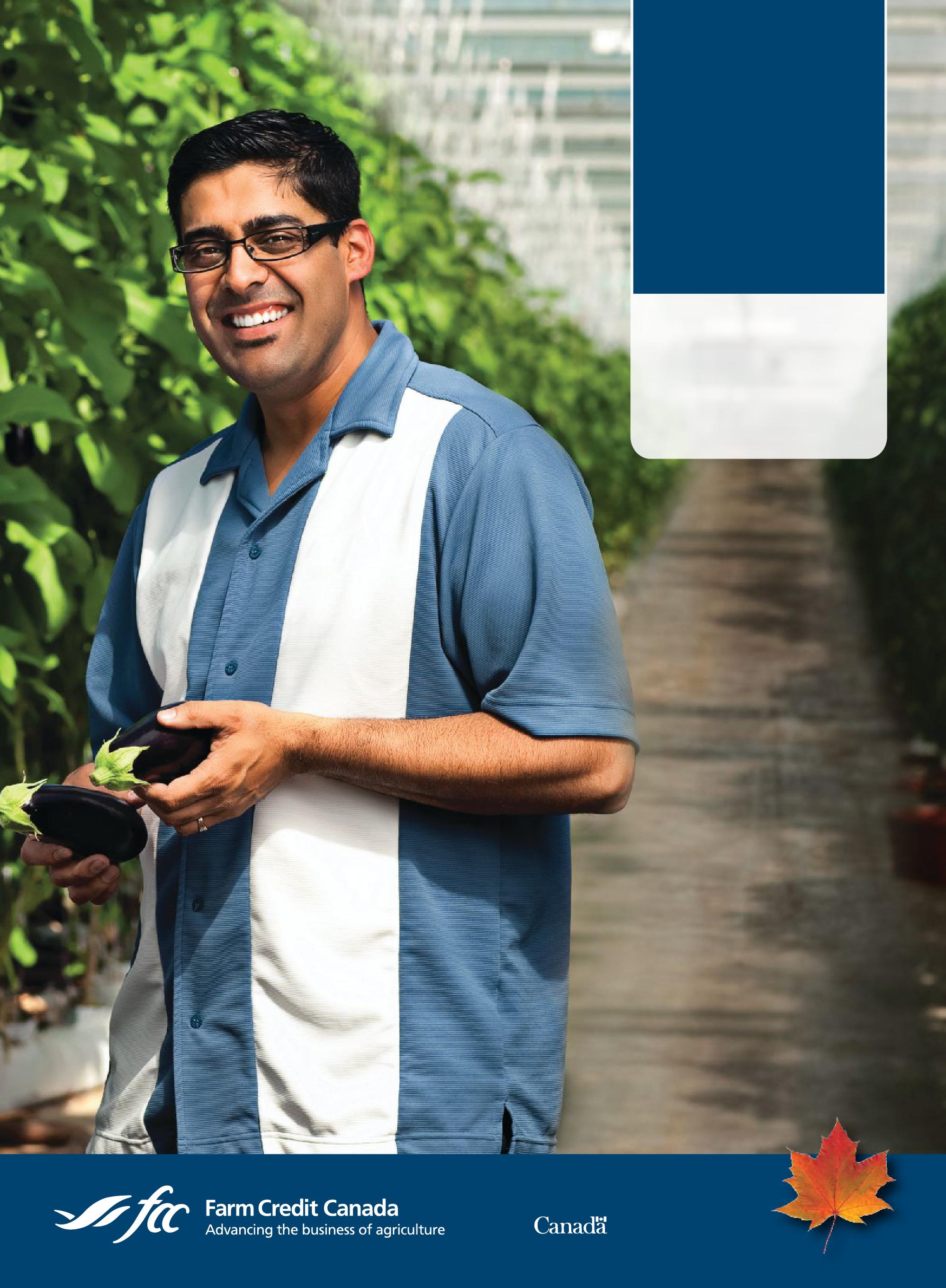
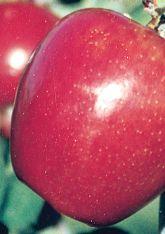
Bright, cherry red Braeburn selection; outstanding blush colour; excellent type; juicy, sweet-tart flavour; crisp; late-season variety.
Courtesy of Van Well Nursery

Romano bush bean, replacing Roma II; adapted to major growing areas; exceptional eating quality; low fibre, flavourful beans; upright bush habit. Courtesy of Syngenta
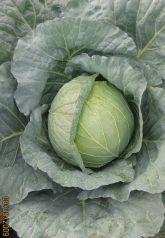
F1; matures in 80 days; productive processing cabbage; main season variety; limited storage; resistance to black rot, thrips.
Courtesy of Bejo Seeds
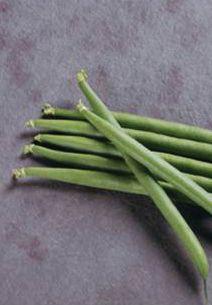
Similar to Prevail, slightly darker colour; consistent high yields with long shelf life; stress-tolerant; excellent pod quality, reduced culls; great flavour, texture. Courtesy of Syngenta

Darker Jade bean; bush bean widely adapted to major growing regions; upright structure minimizes curling, tip rot; harvest over extended period with multiple picks. Courtesy of Syngenta

F1; ready 70 days from transplanting; flat head, uniform; tolerant to heat, cold, bursting; suitable for spring, summer, fall harvest.
Courtesy of AgroHaitai
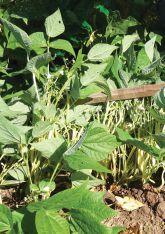
Matures in 58 days; good yellow colour; long, straight pods; good field holding; tolerant to brown spot. Courtesy of Norseco
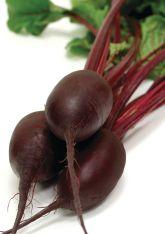
Hybrid, matures in 58 days; semi-long cylindrical root, small crown, small taproot; recommended for processing; high output. Courtesy of Norseco
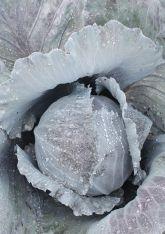
New for long-term red storage; uniform large heads; six to eight pounds in size; excellent for long-term storage applications. Matures in 115 days.
Courtesy of Seedway
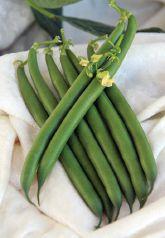
Uniform, dark green pod colour; very straight, primarily four sieve pods; upright plant structure; 56day maturity; resistance to bean common mosaic, beet curly top, bacterial brown spot, halo blight; common blight.
Courtesy of Stokes Seeds
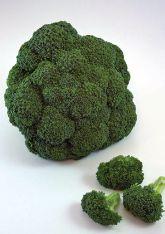
Mid-early maturing type, adapted to warm seasons; erect plants, medium size main stems; reduced hollow stem; smooth dark green crown; mediumsized beads.
Courtesy of Norseco, Seedway and Stokes Seeds

Improved early red for fresh market; makes a large red head with excellent interior, exterior colour; compact, medium frame plant provides sufficient wrapper leaves. Matures in 74 days. Courtesy of Seedway

F1; 55 days to maturity; Chinese type cabbage; high quality; yellow interior; dark green wrapper leaves; clean head; resistance to soft rot, pepper spot, club root.
Courtesy of Bejo Seeds

F1; matures in 78 days; productive, bulky carrot for jumbo or processing; medium tops; high yield; good disease resistance. Courtesy of Bejo Seeds
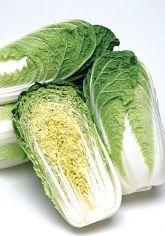
Hybrid Chinese type cabbage; matures in 65 days; can be stored up to two months.
Courtesy of Norseco

F1; 52 days to maturity; very early; tender, crunchy, mild flavour; holds well in summer heat.
Courtesy of Bejo Seeds
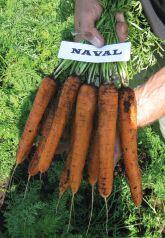
F1; matures in 72 days; good in sand, muck; high heat tolerance; strong, upright tops; very uniform; for slicing or cello.
Courtesy of Bejo Seeds
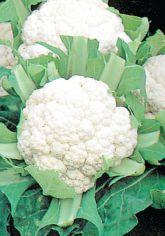
Outstanding early cauliflower; heads are uniform in size, dome shaped, very smooth, bright white with good curd density; mediumsized plants provide sufficient wrapper leaves.
Courtesy of Stokes Seeds

Improved SH2; 77 day augmented plus variety from Crookham; produces eight-inch ears; good eating quality.
Courtesy of Rupp and Siegers

F1; matures in 54 days; early bunching carrot; good length; highly uniform; dark green tops; good flavour from storage; good for late plantings.
Courtesy of Bejo Seeds
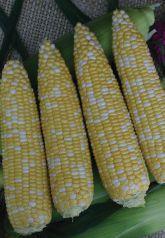
Rust-resistant version (RpGDJ) of original; the same great flavour as Awesome. Plant will be more vigorous. Awesome XR matures in 74 days.
Courtesy of Seedway
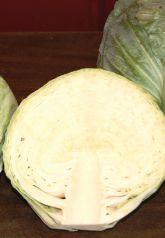
F1; matures in 98 days; productive processing cabbage; late season; very upright; good for hand or machine harvest; clean, dense heads; medium storage. Courtesy of Bejo Seeds

F1; matures in 75 days; purple inside and out, widely used for dye extraction, juice production; easy growing; long roots; good storage.
Courtesy of Bejo Seeds
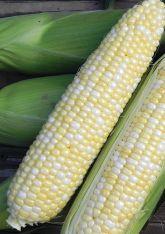
New 78-day, synergistic bi-colour from Seneca Vegetable Research; provides tender, refined kernel; excellent eating quality.
Courtesy of Rupp

Rust-resistant version (RpGDJ) of original Fantastic; same great flavour as Fantastic. Plant will be more vigorous. Fantastic XR matures in 74 days. Courtesy of Seedway and Siegers

Excellent kernel colour contrast; high quality; clean, single-stalk plant; good husk protection and flags; mid-season variety with main-season performance.
Courtesy of Siegers
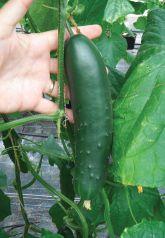
F!; matures in 50 days; parthenocarpic cucumber; American slicer style; specifically for use in high tunnels; also grows well in field; dark green fruit; small seed cavity; uniform. Courtesy of Bejo Seeds

Early bi-colour with dark green husks, contrasting kernel colour; eight in ear with 16-18 rows; good tip fill, husk cover, straight rows, blunt tips, snaps easy; tolerance to Stewart’s Wilt; good tolerance to Rp DGJ rust. Courtesy of Stokes Seeds

High quality SSW; strong, sturdy plant; good husk protection; good seed vigour. Courtesy of Siegers

Lebanese-style cucumber, matures in 53 days; early; dark green; crispy sweet fruit; good disease package. Courtesy of Norseco

White, synergystic corn with dark green husks, excellent flag leaves; cobs average 7.5 to eight inches, full to the tip; excellent high sugar taste; tolerant to Common Rust and SW. Courtesy of Stokes Seeds

Great taste; good husk appearance, cover; below ground protection for CRW; insect protection against ECB, CEW, FAW; Roundup weed control. Courtesy of Siegers

New DM-resistant variety from Seminis; early gynoecious slicer yields quality fruit in about 56 days; very vigorous vine; produces uniform, dark green fruit; nine-inches long. Courtesy of Rupp
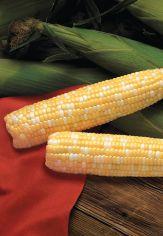
Long, slightly tapered ears, medium green husks; very good tip cover; excellent for main season plantings; ideal for roadside and local markets.
Courtesy of Syngenta
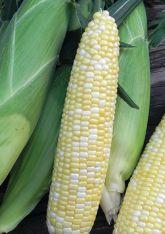
New 76-day, synergistic bi-colour from Seneca Vegetable Research; an eight-inch ear features very tight husk package. Courtesy of Rupp

Moderately vigorous vine; high quality; uniform; dark green fruit; early variety; resistance to DM.
Courtesy of Siegers
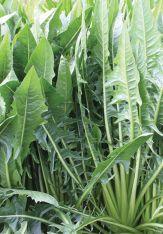
Produces smooth, glossy dark green leaves; grows rapidly; grows upright; resists purpling and bolting; one planting can provide multiple cuttings; intermediate resistance to PM; matures in 55 days.
Courtesy of Seedway

Matures in 45 days; large lime green oak leaf lettuce; hazelnut flavour; replaces General. Courtesy of Norseco
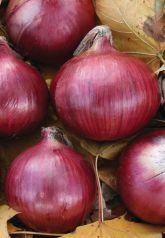
F1; matures in 103 days; early maturing; nice colour; medium to large bulbs; fine neck; good interior red colour; grows easily from direct seeding or transplanting; medium storage.
Courtesy of Bejo Seeds
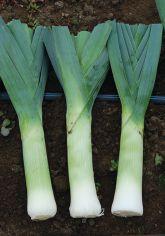
Matures in 90 days; uniform, productive; slender shafts; provides younger, fresher appearance.
Courtesy of Norseco

Matures in 85 days; earliest of all head lettuces; nice firm head; recommended only for spring sowing.
Courtesy of Norseco

Matures in 45 days; dark red oak leaf lettuce; compact plant habit; dense, tender heart; can also be grown in greenhouse.
Courtesy of Norseco
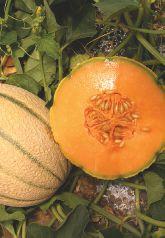
New from Enza Zaden; big brother to Tirreno; fruit have beautiful firm flesh, excellent holding ability; plant has tremendous health; high yields. Courtesy of Rupp

Matures in 65 days; erect plant habit; dark green foliage; does not bulb; perfect for bunching.
Courtesy of Norseco
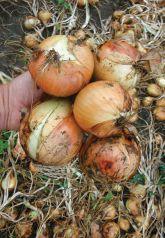
F1; matures in 90 days; available as onion sets; early maturity from early spring planting; medium bulb; makes nice green onion for bunching; limited storage. Courtesy of Bejo Seeds

Long-day red onion matures in 110 days; large round bulb medium to dark red; good internal colour; suitable for transplant or direct seeding in all onion areas of Canada; expect medium-term storage. Courtesy of Stokes Seeds
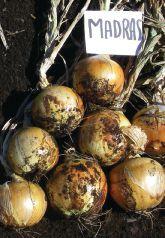
Good bulb size, storage ability in second early slot; strong plant, root vigour. Matures in 105 days.
Courtesy of Bejo Seeds and Seedway

F1; mini-type white pak choy; used for Nabai Miao; tolerant to heat, cold; suitable for late spring, summer, fall harvest.
Courtesy of AgroHaitai

Matures in 120 days; main crop variety; excellent weight distribution; shallow crowns; long roots; very vigorous growth; resistance to canker.
Courtesy of Norseco

Trio of conical peppers from Enza Zaden; six- to seven-inch fruit; superior flavour compared to bells; set well in heat; well suited for high tunnel production. Courtesy of Rupp
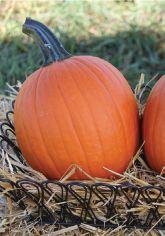
Popularly sized at two to four pounds; great for kids, school groups; uniform fruit with roundtall shape, strongly attached handle; intermediate resistance to PM.
Courtesy of Seedway
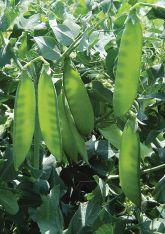
Matures in 65 days; flat snow pea type; usually used in stir-fries; can also be frozen or eaten fresh.
Courtesy of Norseco

Straight, uniform, thickwalled fruit; main season maturity; high yield; excellent quality; good recovery.
Courtesy of Siegers
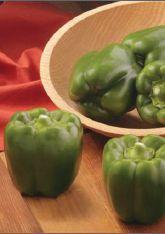
High, marketable yields with premium fruit quality; continuous fruit setting; large percentage of extra-large, jumbo fruit; resistance to TSWV and Xcv races 1-5, 7-9.
Courtesy of Syngenta

Green-to-red blocky variety; adapted for open field production in all growing regions; produces high yields with fewer culls; resistance to TSWV, Xcv races 1-5, 7-9. Courtesy of Syngenta

Miniature pumpkin; three-inch by threeinch fruit; true pumpkin shape; shallow ribs; high yield; vigorous bush; resistance PM.
Courtesy of Rupp

New Italian shepherdtype pepper; fruit measures eight to 10 inches in length; matures from green to dark red; matures in 70 days; large, very upright plant.
Courtesy of Seedway

Carries resistance to Rhizoctonia, DM; bright red exterior, excellent interior quality; best in cooler conditions for best root shape; avoid hot-season plantings. Courtesy of Seedway

Fruit is classic round shape with long handle; fruit weighs in three to four pounds; vines carry intermediate resistance to PM.
Courtesy of Seedway and Siegers
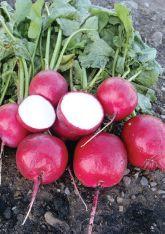
Early maturing variety with short tops, eight inches; has excellent round shape; beautiful red colour; good internal quality; produces thick skin. Courtesy of Stokes Seeds
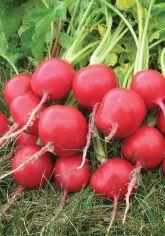
F1; matures in 25 days; hybrid radish; round bulb; bright red colour; medium tops; white interior; crunchy texture; holds up well in heat; highly uniform. Courtesy of Bejo Seeds
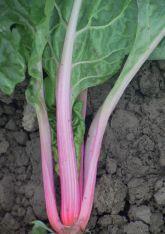
Matures in 58 days; used for both fresh market and ornamental; very distinctive colour; OP variety. Courtesy of Norseco

Deep red, firm flesh containing very small pips; rich, classy rind appearance; high yielding, superior flavour profile.
Courtesy of Syngenta

F1; 60 days to maturity; short type, 12 inches long; slow bolting; tolerant to heat, cold; suitable for spring, summer fall harvest. Courtesy of AgroHaitai

Matures in 58 days; very vigorous; healthy, upright plant; can handle multiple harvests; strong colour contrast; OP variety. Courtesy of Norseco

New 92-day from US Seedless; flesh is orange, crisp; fruit are round-oval shape; weigh 14-18 pounds. Courtesy of Rupp

Maturity in 95 days; F1 hybrid; nice size, shape, uniformity; tan fruit have thick necks, small seed cavities, smooth exteriors, average 10 in length; vigorous vines; orange interior colour. Courtesy of Stokes Seeds
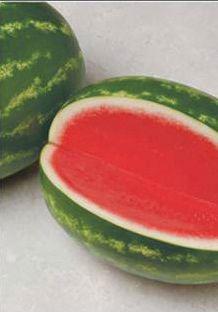
Larger version of Fascination; good fruit set, excellent yield; uniform, large-size seedless producing mostly 36 count fruit. Courtesy of Rupp and Syngenta

High yielding, new age seedless variety; produces uniform, oval fruit with rich, classy rind; attractive, firm, red flesh with small pips; crisp, sweet flavour. Courtesy of Syngenta
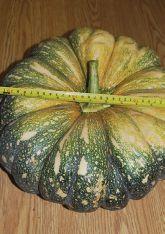
F1; winter type squash; matures in 90 days; flat fruit; firm, sweet orange flesh.
Courtesy of AgroHaitai
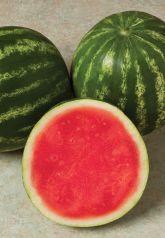
Globe-shaped, mediumlarge fruit in 15- to 18-pound size range; very firm, red flesh with potential for fresh cut; rich rind colour; good fruit set, high yield. Courtesy of Stokes Seeds, Syngenta

Classic fruit with high gloss, refined flecking pattern, green colour; produces high quality fruit; spineless petioles minimize fruit scarring during harvest; open, upright plant for easy picking. Courtesy of Syngenta
label for details)
or drench application. Foliar applications only on bearing trees.
application at petal fall.
recommendations.
for scab. *4 day re-entry for carrying out
spray recommendations.
+Always tankmix with an
For use as a drench, dip or spray application before storage of fruit.
For control of Powdery mildew, tank-mix with Nova Fungicide
Once residues have dried. Hand harvesting: 5 days Hand thinning: 12 days
Apply as a drench at the base of the trunk.
use only on non-bearing apples.
Follow local spray recommendations. *For use controlling storage diseases in Ontario and Quebec only. Apply two weeks before harvest. PHI 14 days.
For use as a drench or dip application before storage of fruit.
Follow local spray recommendations. In Eastern Canada, mix with Captan (PHI = seven days). *In B.C. only.
Read and follow label directions
Read and follow label directions
Use in a tank mix, start applications at green tip then 7 days later. Do not use more then 2 times per
Follow local spray recommendations. Prebloom: do not apply more than two applications of Vangard 75WG alone. Can be mixed with Polyram, Manzate, Dithane (check label). *When mixed with Nova 40W.
Resistance grouping: The fungicide resistance advisory committee (FRAC) assigns group numbers to identify resistance grouping. M indicates multi-site activity
groups to manage
label for details)
Maximum of two sequential applications. Use high rate during periods of high disease
First applications should be made when disease first appears.
Post plant, pre-emergence application. Apply to the soil 3 days after planting
Resistance grouping: The fungicide resistance advisory committee (FRAC) assigns group numbers to identify resistance grouping. M indicates multi-site activity
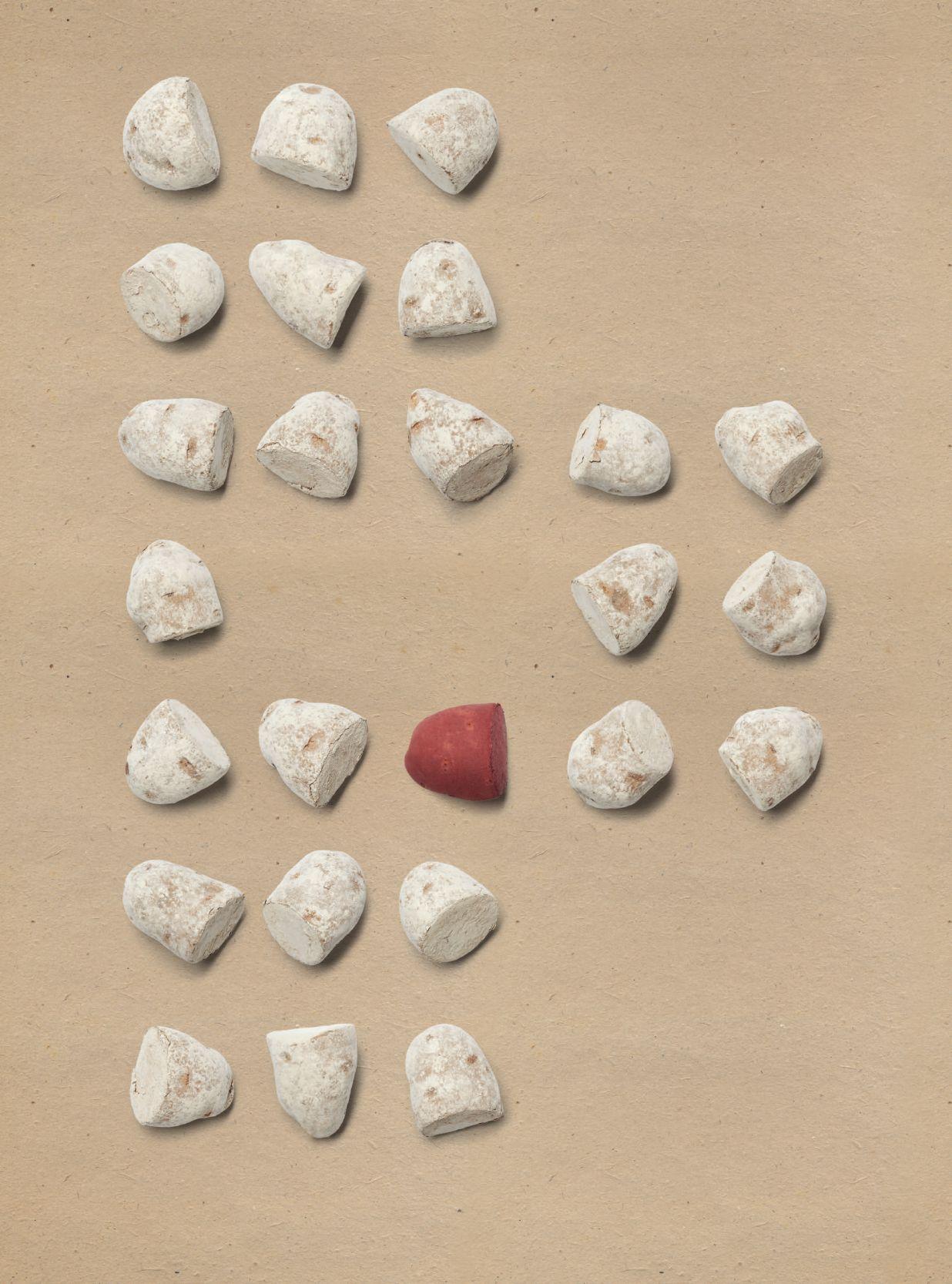

Change

Only one of these potato seed-pieces is protected from the broadest spectrum of insects and diseases. Only one is safeguarded with two new fungicides. Only one takes fusarium protection to the max — even against resistant strains. And only one is covered with Titan ™ Emesto ™, the rst and only coloured liquid seed-piece treatment. It’s easy to use and even easier to see the difference it makes. And you’ve never seen anything like this before.
Learn more at

A six million dollar grant was awarded to Purdue University during fall 2012 to develop a robotic pruning system that will be capable of pruning grapevines to the same level of quality as hand labour.
Project leader Peter Hirst, Department of Horticulture, in collaboration with members of the Department of Electrical and Computer Engineering at Purdue and Vision Robotics of San Diego, Calif., is working to develop and improve machines that use cameras and robotic arms for pruning in vineyards.
The primary issues motivating this research are cost reduction and concerns about the future availability of seasonal labour. According to Michigan State University Extension, pruning is one of the most expensive operations in a vineyard, accounting for about 20 per cent of labour costs, and the availability of workers for pruning can be uncertain.
Vision Robotics of San Diego, a partner in the project with Purdue, has already developed a prototype of an automated grapevine pruner that incorporates stereo vision technology. Two cameras set close together to view the canopy, much as human eyes would, take pictures of the canopy every 0.75 inches and allow the entire cordon to be modeled in 3D before any pruning takes place. A computer translates the 3D vision into a set of actions based on pruning rules written into the software that determine where to make each cut. The cutting system trails the scanning portion of the system and robotic arms make cuts that are guided by lasers.
The current system operates over-therow and is towed by a small, self-steering tractor that only requires a human operator to move the pruner between rows. Improvements in accuracy of cuts and speed of operations are currently under development.
Although the prototype has been field tested, there are many challenges inherent in designing a robotic pruning system.

Variability of canopy architecture, uneven terrain, weather conditions, and the many combinations of training and trellising used by growers must all be accounted for when designing for a complex environment like a vineyard.
Researchers at Purdue will write rules for best pruning practices that will be programmed into the robots, design software, program the pruning practices into the robots and build digital 3D models of the vines. The goal of the project is to advance the prototype into a cost effective system that will be commercially available to growers.
Johnny Park, one of the Purdue team members who will be involved with creating the digital 3D models of the vines, stated that the challenge is to accurately construct 3D models of trees and vines and program that in such a way that the computer can determine the optimal points to prune. Their goal is to make this work at a speed that makes sense financially for growers.




Growers

Whittamore’s Farm honoured by Ontario’s food banks

The Ontario Association of Food Banks (OAFB) presented its annual Paul Mistele Memorial Award to Whittamore’s Farm at the fifth annual Ontario Harvest Gala in Guelph.
Named for the late farm leader who founded Ontario Pork’s Donate-A-Hog program in 1998, the Paul Mistele Memorial Award recognizes agricultural partners who have shown a significant and enduring commitment to ending hunger in Ontario.
“Mike and Frank Whittamore, owners and operators of Whittamore’s Farm in Markham, have been incredible partners to the Ontario Association of Food Banks for many years,” said Bill Laidlaw, executive director of the OAFB. “Through our Community Harvest Ontario program, Whittamore’s Farm has donated thousands of pounds of fresh fruits and vegetables to Ontarians in need.”
Community Harvest Ontario works to address the growing need for healthy, fresh food in food banks by partnering groups of volunteers with local farms across the province. Whittamore’s Farm has been an ongoing partner since the program’s launch in 2009 and continues to be a community leader in addressing hunger in Ontario.
The governments of Canada and Ontario are providing additional support for tree fruit growers whose crops were damaged last year.
An unseasonably warm spring in 2012 caused some fruit trees across Ontario to bloom early. A subsequent frost caused severe damage to blooms and emerging fruit buds.
Canada and Ontario are providing up to $2 million through non-business risk management (BRM) programming for tree
fruit growers to develop mitigation strategies to address frost damage. This is in addition to an estimated $74 million that will be paid out through BRM programs, including Production Insurance, AgriStability and Ontario’s Self-Directed Risk Management program.
Any Ontario producer with more than $7,000 in tender fruit or apple income in their 2011 tax year who will be producing these commodities in 2013 is eligible. Provisions will be made for producers who began production in the 2012 or 2013 tax year.
Workbooks to help producers develop their own risk mitigation strategies for adverse weather will be available from Agricorp in late January, along with additional information and guidelines. Completed workbooks must be submitted by February 28.
An assessment of the 2012 frost event under the federal-provincial-territorial AgriRecovery Framework found that the comprehensive assistance available under business risk management programs sufficiently addresses the resulting income and production losses.
One of the critical moments in the final quality of potatoes occurs during storage, when the risk of sprouting or rotting due to pathogenic agents, such as bacteria and fungi, can occur. In order to avoid this, agricultural engineer David Gómez Castillo carried out research for his PhD on the possibility of substituting chemical products, currently used to treat tubers, with essential oils of mint, caraway, coriander, eucalyptus and clove.
The chemical product Clorprofam (CIPC) is most commonly used as a sprout suppressant on stored potatoes. Nevertheless, possible reductions in permitted dosages, and market and consumer pressures seeking healthier and more environmentally friendly products, have made it necessary to find alternatives to these synthetic products.
David Gómez Castillo studied the effect of applying essential oils of mint, caraway, coriander, eucalyptus and clove with both table-stock varieties (Agata and Monalisa) and processing varieties (Agria and Kennebec), and compared the results with potatoes that had been treated chemically.
The research analyzed two parameters: the commercial quality (germination, texture and colour of the tuber) and the culinary and technological quality (colour and texture of slices of the potato, dry material, total soluble solids, reductor sugars and sensorial analysis). Evaluations at 10, 25, 40, 55 and 70 days in storage were also undertaken to assess the antimicrobial effect of the essential oils.
“We found a high antigerminant capacity with treatment using the essential oil of coriander for industrial crops, and with the essential oil of mint for both industrial and table-stock crops,” said Gómez. “These showed great inhibitory potential on the principal phytopathogenic problems studied and all this makes a good alternative to CPIC use for storage of potatoes.”
The essential oil of eucalyptus also showed a high antigerminant capacity with table-stock potatoes and “could be another alternative for reducing post-harvest losses due to phytopathogenic problems, obtaining even better results if the treatment is accompanied by the essential oil of clove.”
The use of treatment with essential oils in the storage of potatoes “can provide added value in the application of antigerminant treatment, due to its efficacy in controlling the progress of important phytopathogens,” said Gómez.
As part of the Canadian Food Inspection Agency’s (CFIA) routine testing of various food products, a study was released recently that found 100 per cent of tomato samples analyzed for Salmonella, Shigella, E. coli 0157:H7/NM and generic E. coli contained no contamination and were safe for human consumption.
No follow-up activities were deemed necessary.
The CFIA analyzed 1,414 domestic and imported tomato samples (conventional and organic) collected from Canadian retail stores for Salmonella, Shigella and generic E. coli. More than 300 of the tomato samples (imported organic and conventional domestic) were also analyzed for E. coli 0157:H7 and E. coli 0157:NM.
More information on this survey report is available on the CFIA website.





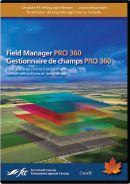


Minor Use registrations added to Quadris Quadris fungicide has received Minor Use registration for suppression of Alternaria leaf spot (Alternaria brassicae) on cabbage, suppression of blossom blight (Ascochyta spp. and Alternaria spp.) on cumin and suppression of black root rot (Rhizoctonia fragariae) on strawberries.
Quadris is a broad-spectrum, preventive fungicide with systemic properties. Optimum disease control is obtained when Quadris is used as a protective treatment prior to disease establishment.
Cabbage – Alternaria leaf spot can cause losses from spotting lesions on the heads of cabbage, reducing yields and increasing the number of unmarketable heads. Symptoms appear first on the older leaves as small, yellowish lesions that expand to resemble a target with concentric light and dark areas. Alternaria leaf spot can quickly spread from the leaves to the heads, with the lesions ranging in size from pinpoint to several centimetres in width.
Cumin – Blossom blight infected plants show minute, brownish necrotic spots, which later turn a shade of black. Diseased plants fail to produce seeds. If seeds are produced, they remain shrivelled, light in weight and dark in colour.
Strawberries – Black root rot on strawberries is a very complex and serious disease. It affects primary feeder and perennial roots of the strawberries. Often symptoms are not evident until a year or two after planting. Infected roots develop black lesions on


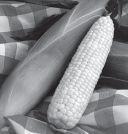
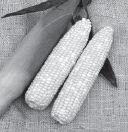

Szucs

the surface that eventually extend into the interior tissue, resulting in the entire root becoming black and rotted through. Infected plants typically appear wilted and stunted, particularly around fruiting time when there is greater demand on the roots for water and nutrients. As a result, less fruit is produced from the infected plants. Additionally, plants with black root rot are susceptible to secondary pathogen infections and can be at higher risk of winter injury. Management of black root rot begins with disease avoidance and keeping plants healthy and vigorous from transplanting through to harvest.
Beginning March 1, Case IH Advanced Farming Systems (AFS) customers are seeing an added level of support for their precision farming investment.
Case’s new AFS Support Center provides 24/7/365 access to service and support for everything from monitors, to guidance technology, to receivers, to section control. This additional support will help Case IH customers stay up to date on the latest technology while minimizing downtime and offering solutions around the clock.
The AFS Support Center will further supplement the AFS services offered through dealerships by providing support engineers with access to additional resources. These support engineers will be able




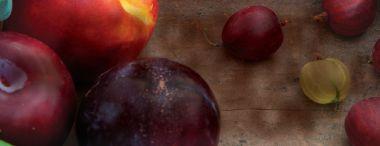


Et(IR), MDMV(HR), Ps(HR), Pst(IR). Attractive ear with great taste! High yield potential with a medium, sturdy plant and good husk protection.
